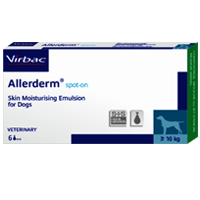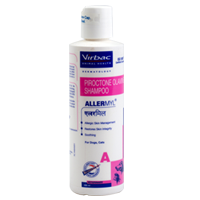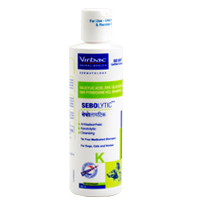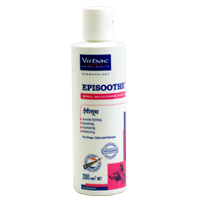.jpg)
Virbac offers expert-recommended cat skin infection medicine through a range of specialized products. We provide solutions like topical dermatologicals to repair, restore, and protect the epidermis, manage atopic dermatitis, and treat infectious dermatitis. With options including anti-septic ear cleansers and holistic shampoos for keratoseborrhoea, we ensure comprehensive care for cat skin infections. These products are crafted to deliver effective relief and support for maintaining healthy, infection-free skin in cats.
Expert Recommended Cat Skin Infection Medicine
Topical Dermatologicals (Skin/Ear)
1. What are the common signs of skin infections in cats?
Common signs of cat skin infections include hair loss, excessive grooming, and red, scaly, or scabby areas on the skin. You might also see visible fleas and ticks on your cat’s coat. Flea dirt, which consists of dried blood, is a common sign of a flea infestation. If your cat shakes its head excessively, this might indicate an issue with the ears. Regular grooming can help detect these signs early.
2. What causes skin infections in cats?
Cat skin infections can be caused by various factors, including parasites like fleas and ticks, allergies, and environmental factors. Outdoor cats are at higher risk due to potential exposure to parasites and injuries from fights. Male cats are particularly prone to bite wound-induced abscesses. Food allergies and contact allergies to cleaning agents can also lead to skin problems. Autoimmune conditions such as Pemphigus foliaceus can cause crusts and ulcers on the skin.
3. How can I treat my cat's skin infection?
The treatment for a cat skin infection depends on the type and severity of the infection. For bacterial infections, such as pyoderma, cat skin infection medicine includes antibacterial medications. Treatment generally involves a combination of topical and systemic treatments. For fungal infections like ringworm, antifungal treatments are used, including topical creams and shampoos, with severe cases potentially requiring systemic oral antifungal medications. Always consult a vet for proper diagnosis and treatment rather than using medications not prescribed for cats.
4. What are the typical treatments for cat skin infections?
Typical treatments for cat skin infections involve antibacterial medications for bacterial infections and antifungal treatments for fungal infections. Topical treatments might be sufficient for mild cases, but severe infections often require a combination of topical and systemic medications. Ensuring you use the correct cat skin infection medicine and avoiding medications not specifically prescribed for cats is crucial for effective treatment. Regular veterinary care and adherence to prescribed treatments are essential for managing your cat’s skin health.



.png)


